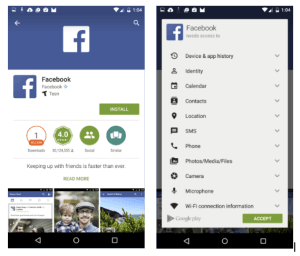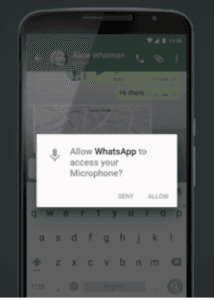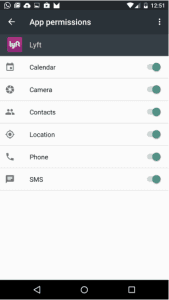Updated Permissions in Android M: New Challenges and Opportunities
Published on July 23, 2015/Last edited on July 23, 2015/3 min read


Team Braze

Android developers have traditionally had an easy time convincing people to opt-in. Customers installing an app have been greeted with a “Wall of Permissions” that encouraged them to grant blanket access to their device’s tools and data no matter what the app needed to correctly function. That’s about to change.

(l-r) Current install and “Wall of Permissions”
With Android M, customers will be asked to grant permission the first time an app tries to access their device’s camera, microphone or other similar tools or personal data, rather than being prompted to give comprehensive permissions at install. For instance, if a new customer starts off using WhatsApp exclusively as a text messaging app, when they try to make their first call, they will be asked permission to use the microphone, since it won’t have been needed previously. Customers on Android devices will also have the option to withdraw or issue permissions on a case-by-case basis using their device’s app settings.

A post–Android M permission request
This is a big change for Android, bringing its permissions paradigm more in line with iOS. For affected app developers, the impact could be positive or negative, depending on how quickly they move to embrace the update and how sensible their requests currently are.
Impact on Push Notification Opt-Ins and Uninstall RatesWhile push notification opt-in rates on Android are likely going to fall to levels similar to those in iOS as a result of the new explicit opt-ins, Android apps should also see lower uninstall rates. After all, customers who opt into push and location-tracking via the “Wall of Permissions” and aren’t happy with how a given app engages with them now have options other than just uninstalling it.
Connect Permissions to Customer Value to Increase Opt-InsAndroid app developers will also need to be more explicit about why they’re requesting specific permissions and how that access will add value if they want customers to opt-in. By using custom opt-in prompts to clearly explain to your audience why you’re requesting specific permissions (and A/B testing those prompts using in-app messaging suites like the one offered by Appboy), you can maximize the number of customers who opt-in, giving your organization a competitive advantage over rivals who take permissioning for granted. However, keep in mind that permissions under Android M are lower stakes than iOS – if a customer turns something off, you have more than one opportunity to ask them to change their mind.

Android M will make it easy to turn permissions on and off
Looking for more information about how to craft your permission-request strategy? Check out Appboy Academy’s entries on data opt-in and best practices for push opt-in prompts for more detailed advice.
Be Absolutely Engaging.™
Sign up for regular updates from Braze.
Related Content
View the Blog
A day in the life of a data scientist on the BrazeAIᵀᴹ forward-deployed engineering team

McKay Jensen

The new inbox reality: How iOS changes are reshaping email marketing

Aparna Prasad

Experience optimization: Turning data insights into better journeys
